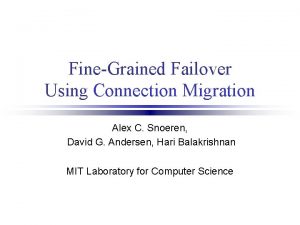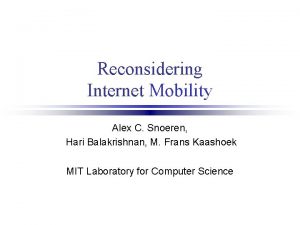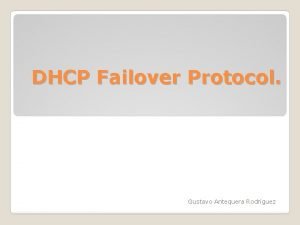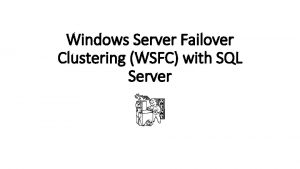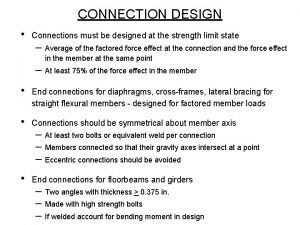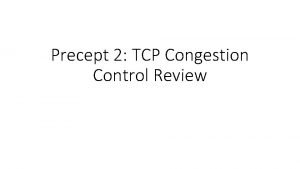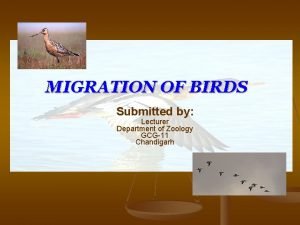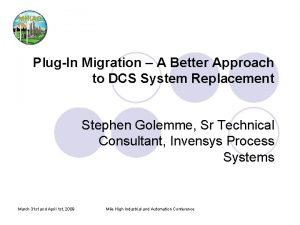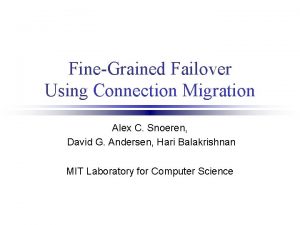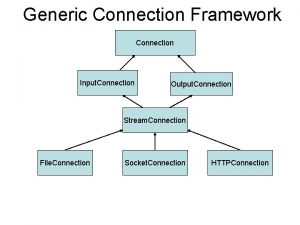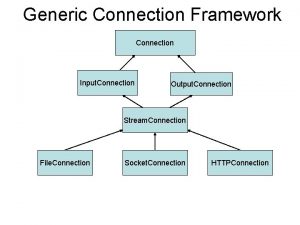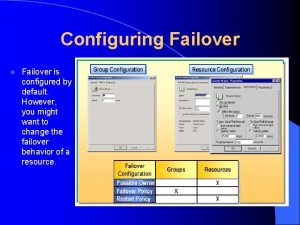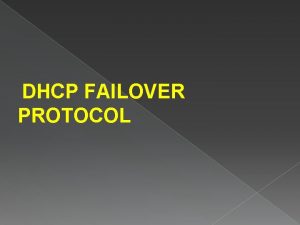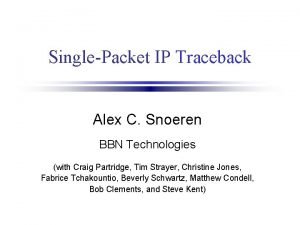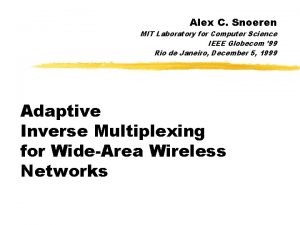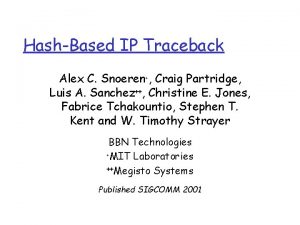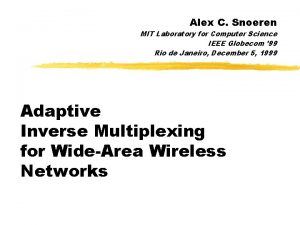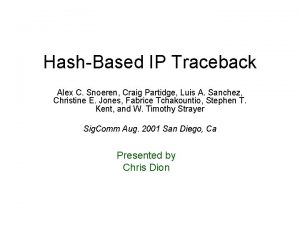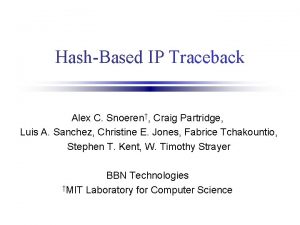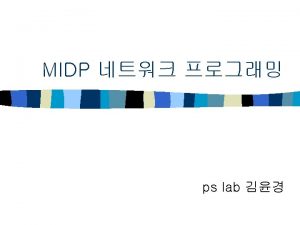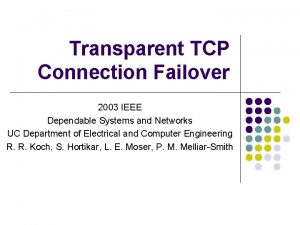FineGrained Failover Using Connection Migration Alex C Snoeren




















- Slides: 20

Fine-Grained Failover Using Connection Migration Alex C. Snoeren, David G. Andersen, Hari Balakrishnan MIT Laboratory for Computer Science

The Problem Client Content server Servers Fail. More often than users want to know…

Solution: Server Redundancy Use a healthy one at all times.

Failover Components 1. 3. Health Connection 2. Server Monitoring Resumption Selection

Today’s Replication Technology DNS • DNS/Content Routing üWide-area replication ONeed client awareness üTransparent, possibly mid -stream failover ORequires co-location Web Switch • Layer 4/Web Switches

Ideal Technology • Wide area replication § Yet somehow synchronize replica servers • Transparent failover § Enable other servers to continue connections

Migrate Architecture § Transparently hand off sessions between servers Stream Mapper • Connection Migration Stream Mapper § Infer application state from transport layer information Stream Mapper • Stream Mapping

Stream Mapping Client: GET /Streaming. Content. mpg HTTP/1. 1 Server Response: TCP ISS 083521 HTTP 1. 1 200 OK Content-Length: 328987. . . Content-Type: video/mpeg TCP Seq. No 083346 Stream Map: Client Object (URL) 128. 89. 3. 24: 4234 /Streaming. Content. mpg Offset (TCP Seq. No) 083346

Anatomy of Failover Initial Connection Client Migrated Connection Support Group

Support Groups • Set of partially mirrored servers § All servers able to provide same content § Can be topologically diverse • Synchronize on per-connection basis § Servers need not be complete mirrors § Connections from a failed server can be handled by a different support server § Connections may have distinct support groups

Soft State Synchronization • Synchronize within support groups § Periodic advertisements § Advertise client application object requests § Communicate initial transport layer state • Only initial state need be communicated § Current info inferred from transport layer § Clients will reject redundant migrates from stale support servers

client server TCP Connection Migration 1. Initial SYN 2. SYN/ACK 3. ACK (with data) 4. Normal data transfer 5. Migrate SYN 6. Migrate SYN/ACK 7. ACK (with data)

client server TCP Connection Migration 1. Initial SYN 2. SYN/ACK 3. ACK (with data) 4. Normal data transfer 5. Migrate SYN 6. Migrate SYN/ACK 7. ACK (with data)

client server TCP Connection Migration 1. Initial SYN failover server 1(0) SYN 083521: 08352 (migrate T, R) current SYN 533525: 533525(0) ack 545968: 546414(53 ack 533526 6) stale 2. SYN/ACK 3. ACK (with data) 4. Normal data transfer 5. Migrate SYN 6. Migrate SYN/ACK 7. ACK (with data)

Implementation § Stream Mapping § Synchronization Wedge • Software “Wedge” Server App Wedge Stream Mapping Wedges Client Server App

Wedge Overhead 1 e+07 Wedge Direct Microseconds per request 1 e+06 100000 1000 1 10 100 Request size (Kbytes) 10000

Experimental Topology Client initiates a transfer to A… Linux/Apache 1. 3 128 Kbs links then migrates to B… and back to A… Linux/Apache 1. 3

Varying Oscillation Rates 1 e+06 900000 800000 Goodput (bytes) 700000 600000 500000 400000 No Oscillations 10 sec 12 sec 5 sec 300000 200000 100000 0 0 10 20 30 Time (secs) 40 50 60

Benefits & Limitations • Enable wide area server replication § Low server synchronization overhead § Infer current state from transport layer • Robust even under adverse loads § Health monitors can be overly reactive § Gracefully handle cascaded failures • Leverages connection migration § Requires modern transport stack

Networks and Mobile Systems Software available on the web: http: //nms. lcs. mit. edu/software/migrate
 Oracle fan
Oracle fan Alex snoeren
Alex snoeren Alex c. snoeren
Alex c. snoeren Failover protocol
Failover protocol Rto rpo
Rto rpo Slip critical bolted connection
Slip critical bolted connection Slip critical bolted connection
Slip critical bolted connection Text to self examples
Text to self examples Bolted connection
Bolted connection A tcp connection is using a window size of 10 000 bytes
A tcp connection is using a window size of 10 000 bytes System collections generic
System collections generic Defrost using internal heat is accomplished using
Defrost using internal heat is accomplished using Voluntary migration cartoon
Voluntary migration cartoon Why do birds migrate
Why do birds migrate Dcs migration strategy
Dcs migration strategy Oracle zdm step by step
Oracle zdm step by step Ravensteins laws of migration
Ravensteins laws of migration Types of migration
Types of migration Brokasure
Brokasure Essentials of migration management
Essentials of migration management What does chap look like
What does chap look like

